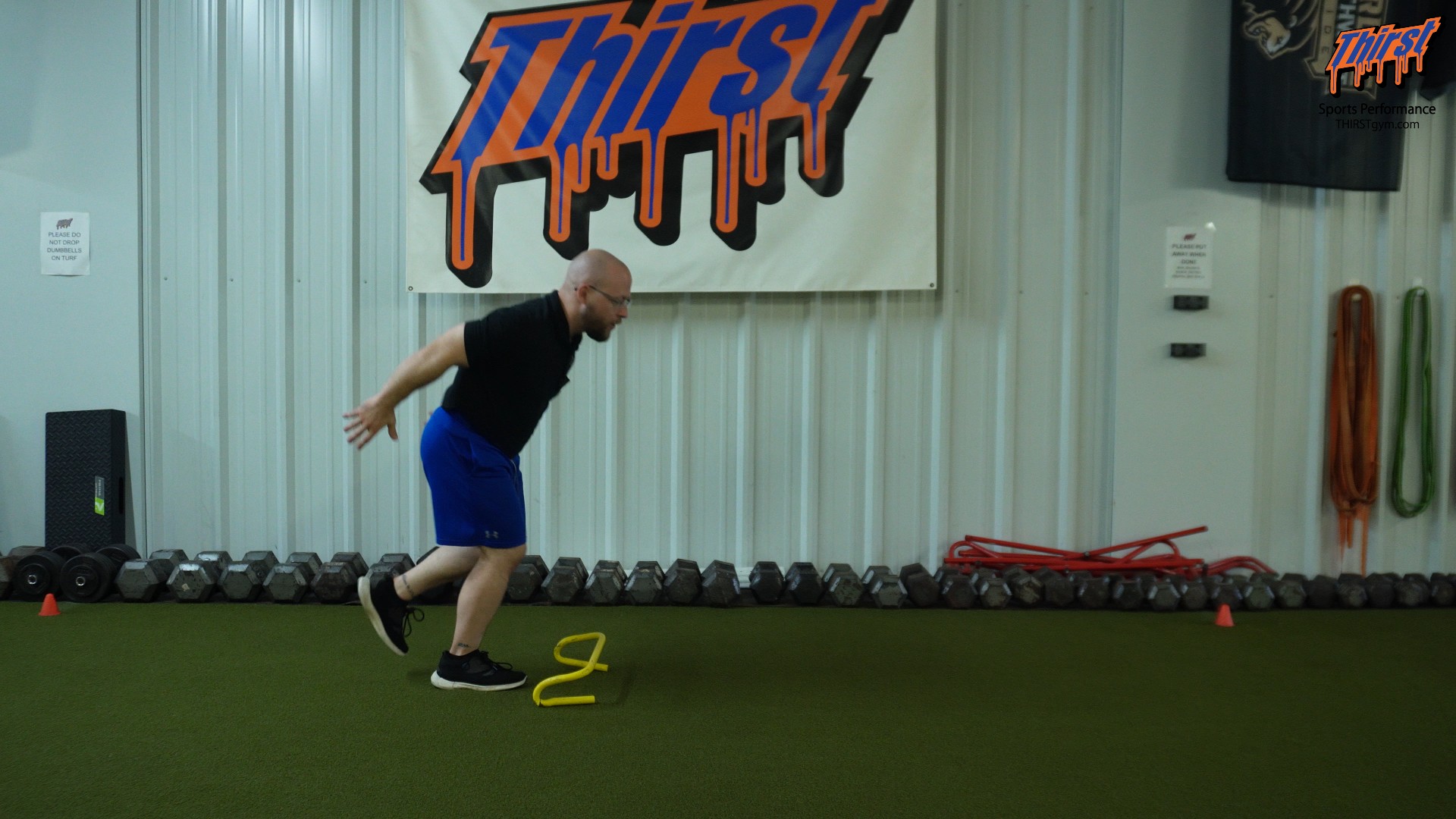Single Leg Hurdle Hop to Broad Jump: The Ultimate Plyometric Exercise for Athletic Performance
When it comes to developing explosive power and coordination in athletes, few exercises combine effectiveness with practicality like the single leg hurdle hop to broad jump. This dynamic plyometric movement seamlessly integrates two fundamental athletic skills into one comprehensive exercise that targets multiple aspects of sports performance training.
Watch the video below on how to maximize this exercise.
What is the Single Leg Hurdle Hop to Broad Jump?
The single leg hurdle hop to broad jump is a compound plyometric exercise that combines unilateral (single-leg) jumping with bilateral (double-leg) landing and propulsion. This exercise sequence challenges athletes to demonstrate control, power, and coordination across multiple movement patterns within a single repetition.
The movement begins with the athlete standing on one leg facing a hurdle. From this position, they execute a single-leg hop over the hurdle, land on both feet, and immediately transition into a maximum-effort broad jump. This seemingly simple sequence actually requires sophisticated neuromuscular coordination and represents an excellent progression in plyometric training programs.
Key Benefits for Athletic Performance
Enhanced Stretch Shortening Cycle Function
One of the primary advantages of this exercise lies in its ability to develop the stretch shortening cycle (SSC). The SSC refers to the muscle’s ability to rapidly transition from an eccentric (lengthening) contraction to a concentric (shortening) contraction. This mechanism is fundamental to virtually every explosive movement in sports, from sprinting and jumping to cutting and throwing.
The hurdle hop to broad jump sequence specifically targets this system by requiring athletes to absorb landing forces quickly and immediately redirect that energy into the subsequent broad jump. This rapid energy transfer mimics the demands placed on athletes during competitive situations.
Improved Ground Contact Time
A crucial aspect of athletic performance is minimizing ground contact time while maximizing force production. The faster an athlete can get off the ground, the more explosive and efficient their movements become. This exercise trains athletes to spend minimal time on the ground during the transitional phase between the hurdle landing and broad jump takeoff.
This skill directly translates to improved performance in sports that require rapid directional changes, quick first steps, and explosive jumping ability. Basketball players, soccer athletes, and track and field competitors particularly benefit from this enhanced ground contact efficiency.
Single and Double Leg Landing Mechanics
The exercise provides valuable training for both unilateral and bilateral landing patterns. Athletes must demonstrate proper single-leg control during the hurdle clearance while also mastering the two-foot landing that sets up the broad jump. This dual landing requirement helps develop comprehensive lower body stability and injury prevention strategies.
Proper Exercise Technique
Equipment and Setup
The beauty of this exercise lies in its simplicity. Athletes need only a hurdle and adequate space for the broad jump landing. The hurdle height should initially be conservative, as the primary goal is movement efficiency rather than maximum height clearance.
Step-by-Step Execution
Starting Position: Begin standing on one leg, facing the hurdle at an appropriate distance that allows for a natural takeoff angle.
Hurdle Clearance: Execute a single-leg hop over the hurdle, focusing on efficient clearance rather than excessive height. The emphasis should be on forward momentum and quick ground contact preparation.
Bilateral Landing: Land on both feet immediately after clearing the hurdle. This landing should be controlled but brief, serving as a transition point rather than a stopping point.
Broad Jump Execution: Without hesitation, explode into a maximum-effort broad jump, focusing on both horizontal distance and proper landing mechanics.
Landing and Recovery: Complete the sequence with a controlled bilateral landing, maintaining balance and proper posture.
Programming Guidelines
Volume and Intensity Recommendations
For optimal results, athletes should perform three to five sets of two to four repetitions per leg. This volume allows for adequate skill development and power training without excessive fatigue that could compromise movement quality.
The relatively low repetition count is intentional, as plyometric exercises should prioritize movement quality over quantity. Each repetition should be performed with maximum intent and proper technique.
Integration with Training Programs
This exercise pairs exceptionally well with other plyometric, speed, and agility-based movements. It can serve as either a standalone power development tool or as part of a comprehensive athletic training circuit.
Consider incorporating this exercise during the power development phase of training sessions, when athletes are fresh and can maintain optimal movement quality. It’s particularly effective when combined with other unilateral exercises or as part of a progressive plyometric sequence.
Special Considerations for Youth Athletes
The single leg hurdle hop to broad jump holds particular value for younger athletes who are developing fundamental movement coordination. While the individual components (single-leg hopping and broad jumping) may be relatively simple, the combination requires sophisticated motor planning and execution.
Young athletes often struggle with the transitional element of landing on two feet and immediately redirecting into the broad jump. This coordination challenge makes the exercise an excellent tool for developing the complex movement patterns required in competitive sports.
Coaches working with youth athletes should emphasize proper progression, starting with lower hurdles and focusing on movement quality before advancing to more challenging variations.
Conclusion
The single leg hurdle hop to broad jump represents an efficient and effective approach to plyometric training that addresses multiple aspects of athletic performance simultaneously. By combining unilateral stability, bilateral power, and rapid force production, this exercise provides comprehensive training benefits that directly translate to improved sports performance.
Whether you’re a coach looking to enhance your athletes’ explosive capabilities or an athlete seeking to develop better coordination and power, this exercise deserves consideration in your training program. Remember to start conservatively, focus on proper technique, and progress systematically to maximize both performance gains and injury prevention.








